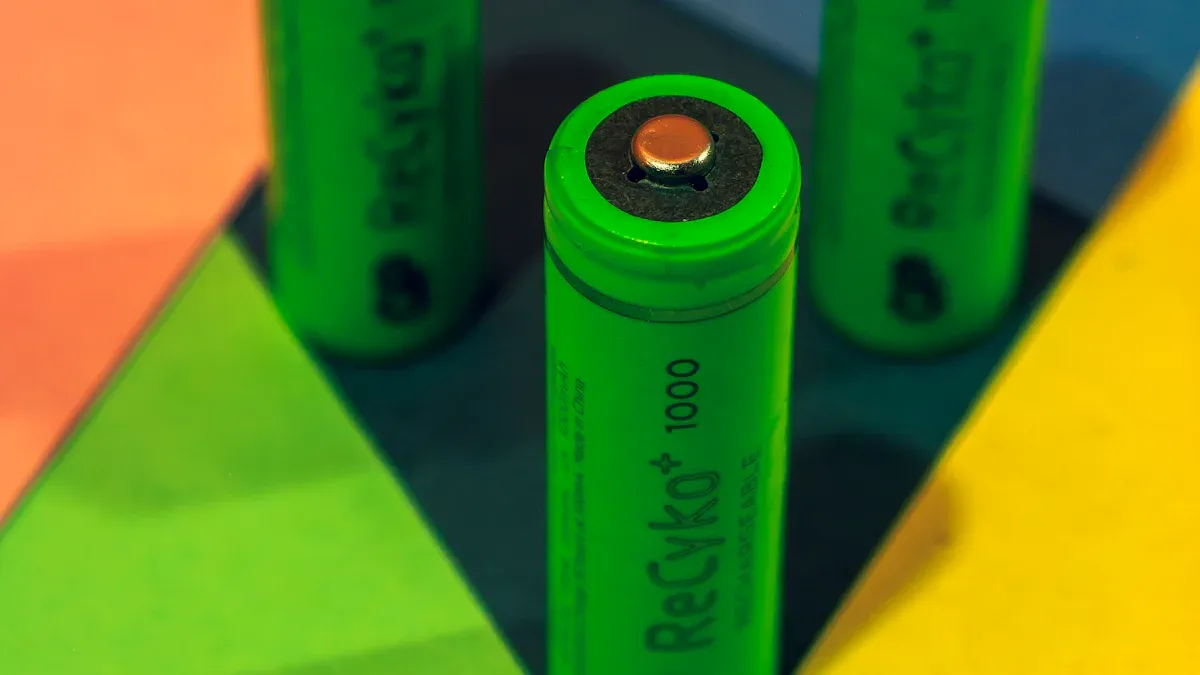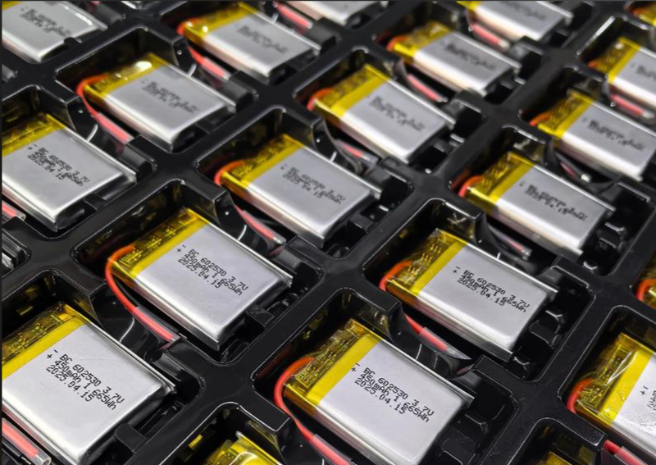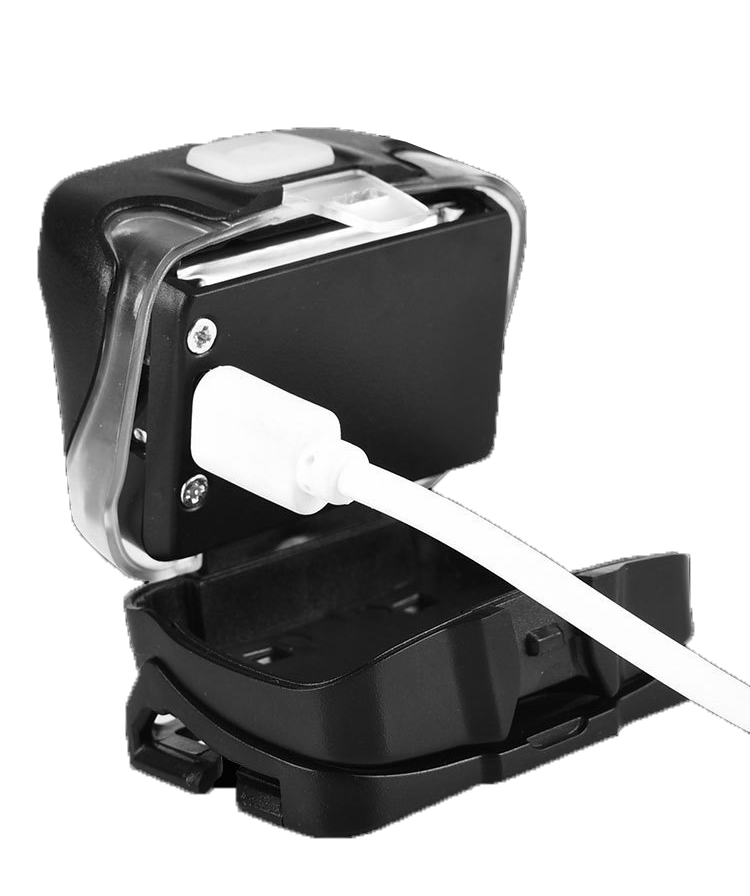Industry forecasts for 2025 reveal that headlamp battery innovation leads to longer battery life, faster charging, and more compact designs. The market is projected to reach $7.7 billion, with growth driven by rising demand for rechargeable lithium-ion batteries. Enhanced LED efficiency and smart features, such as programmable beams and Bluetooth connectivity, improve performance and safety. Trade partners benefit from expanding opportunities as eco-friendly materials and smart technologies support sustainability and align with global green policies.
Key Takeaways
- New headlamp batteries offer longer runtimes, faster charging, and smarter features that boost worker safety and productivity.
- Advanced battery designs reduce costs by lasting longer, charging quickly, and lowering maintenance needs.
- Eco-friendly materials and recycling programs help trade partners meet sustainability goals and reduce environmental impact.
- Rugged, safe headlamps with smart monitoring protect users and minimize downtime in tough work environments.
- Trade partners can grow their business by adopting innovative battery tech, forming partnerships, and targeting new markets.
Why Headlamp Battery Innovation Matters for Trade Partners
Productivity and Safety Gains
Trade partners recognize that productivity and safety drive value in demanding environments. Advanced headlamp battery innovation delivers longer runtimes, stable illumination, and reliable performance, which directly support these goals. In hazardous industries such as oil and gas, mining, and chemical processing, strict safety regulations require intrinsically safe lighting solutions. Modern headlamp batteries now offer extended operational time and enhanced durability, ensuring compliance with safety standards and reducing the risk of accidents.
Note: Enhanced battery life and LED efficiency allow workers to focus on tasks without frequent interruptions for recharging, which increases overall productivity.
Recent developments in dual-light technology help maintain peripheral vision, reducing slips, trips, and falls. Construction sites that implement these advanced lighting solutions report up to 30% fewer accidents. Night shifts in oil and gas operations see a 20% boost in productivity due to improved visibility. Products like the Klein Tools Intrinsically Safe LED Headlamp demonstrate how high-lumen output and up to 12 hours of battery life can improve worker safety by reducing ignition risks and ensuring consistent lighting in hazardous zones.
- Reliable, long-lasting illumination supports compliance with safety regulations.
- Advanced battery technology reduces downtime and increases operational efficiency.
- Smart features, such as battery indicators and sensor modes, help users manage power and adapt to changing work conditions.
Reducing Total Cost of Ownership
Trade partners seek solutions that lower operational expenses and maximize return on investment. Headlamp battery innovation addresses these needs by extending battery lifespan, reducing maintenance requirements, and minimizing the frequency of replacements. Energy-efficient designs and fast-charging capabilities further decrease costs associated with lost productivity and equipment downtime.
The global headlamps market is projected to grow at a CAGR of 6.62% from 2024 to 2032, reflecting strong demand for innovative, cost-effective solutions. Leading companies invest in research and development to deliver products that combine performance, reliability, and smart features. These advancements help trade partners maintain a competitive edge while controlling costs.
- Longer battery life reduces the need for frequent replacements.
- Fast charging and unified USB-C interfaces streamline charging logistics.
- Durable, rugged designs lower repair and replacement expenses.
Tip: Investing in advanced headlamp battery technology enables trade partners to optimize operational budgets and improve long-term profitability.
Sustainable Materials in Headlamp Battery Innovation
Eco-Friendly Battery Components
Manufacturers now prioritize eco-friendly materials in headlamp batteries to reduce environmental impact. Many leading brands use recycled plastics and hemp fibers, which can lower CO2 emissions by up to 90% compared to traditional plastics. Rechargeable batteries, including USB and micro-USB systems, have become standard. These systems help minimize waste and toxic pollution by reducing the need for disposable batteries. Durable designs also extend product lifespan, which further cuts down on waste. Certifications such as “Recycled Content Certified” and “Biodegradable Verified” validate these environmental claims.
- Silva Terra Scout XT uses recycled polymers and hemp fibers, achieving significant CO2 reductions.
- Black Diamond Storm-R features a rechargeable battery with micro-USB charging and a rugged build.
- Coast FL78R offers a dual power system and lightweight design to reduce material use.
♻️ Rechargeable batteries not only reduce landfill waste but also conserve resources and lower carbon emissions through energy efficiency.
Supply Chain and Sourcing Advantages
Switching to sustainable materials brings clear benefits to the supply chain. Companies that use recycled or renewable components often see improved sourcing stability and reduced costs. Eco-friendly battery components, such as solid-state batteries (SSBs), offer higher energy density and longer cycle life. The table below compares eco-friendly battery components with conventional lithium-ion batteries:
| Aspect | Eco-friendly Battery Components (SSBs) | Conventional Materials (LIBs) |
|---|---|---|
| Environmental Impact per kg | Higher in most categories | Lower in most categories |
| Environmental Impact per Functional Unit | Lower or comparable | Higher |
| Cycle Life Effect | Lower GWP at ~2800 cycles | Higher GWP |
| Performance | Higher energy density, improved safety | Standard performance |
| Manufacturing Impact | More energy-intensive | Less energy-intensive |
Companies that adopt these materials can meet strict regulatory standards and appeal to environmentally conscious customers.
Real-World Trade Applications
Trade environments increasingly demand sustainable solutions. The Mengting headlamp demonstrates this trend by combining rechargeable and disposable battery sources. This model uses recycled materials and compostable packaging, supporting both durability and sustainability. Its rechargeable core allows users to rely mainly on renewable power, reducing single-use battery waste. The company also plans a recycling program for batteries, further supporting environmental goals.
Across regions, industrial users in North America, Europe, and Asia Pacific adopt these technologies to meet regulatory requirements and sustainability targets. Industries such as construction, mining, and emergency services benefit from these advancements. Market growth continues as research and development, partnerships, and digital transformation drive further innovation.
Advanced Chemistries Driving Headlamp Battery Innovation

Next-Generation Lithium-Ion and Solid-State Batteries
Recent breakthroughs in battery chemistry have transformed the landscape of headlamp battery innovation. Researchers and manufacturers now focus on all-solid-state batteries that use micro-scale silicon particles to form lithium-silicon alloy electrodes. This design eliminates liquid electrolytes and removes carbon and binders from the anode, which reduces unwanted side reactions and energy loss. Key advancements include:
- Stable 2D interfaces that improve battery longevity.
- Solid sulfide electrolytes that enhance stability with silicon anodes.
- Laboratory prototypes that achieve 500 charge-discharge cycles with 80% capacity retention at room temperature.
- Energy densities reaching 400 Wh/kg, with targets of 450 Wh/kg by 2025.
- Patent filings from leading institutions such as the University of California, San Diego and LG Energy Solution.
These innovations address cost, safety, and longevity concerns, making them highly relevant for demanding headlamp applications.
Higher Energy Density and Longer Runtime
Advanced chemistries deliver higher energy density, which means headlamps can run longer on a single charge. Silicon-based all-solid-state batteries outperform previous technologies by maintaining stable performance over hundreds of cycles. The removal of carbon and binders from the anode further reduces energy loss, allowing for faster charging and improved efficiency. Users benefit from:
- Extended runtime for outdoor and industrial activities.
- Consistent performance in both high and low temperatures.
- Reduced need for frequent recharging, which increases productivity.
A table below summarizes the improvements:
| Feature | Traditional Li-Ion | Solid-State (2025 Target) |
|---|---|---|
| Energy Density (Wh/kg) | 250-300 | 400-450 |
| Cycle Life (80% Ret.) | 100-200 | 500+ |
| Safety | Moderate | High |
Business Value for Trade Partners

Trade partners gain significant advantages from adopting advanced battery chemistries. Lithium-Ion Polymer, Sodium Sulfur, and Sodium Metal Halide batteries offer higher energy density, improved safety, longer lifespan, and better cost-effectiveness. These features allow trade partners to target high-growth sectors and optimize their product offerings. Competitive pressures in the battery market drive innovation, leading to better performance and lower costs. Strategic partnerships and supply chain improvements further enhance profitability. The growing demand for electric vehicles and advanced recycling technologies also creates new revenue streams and strengthens market positions. By investing in headlamp battery innovation, trade partners can expand their market share and build lasting business value.
Safety and Durability in Headlamp Battery Innovation
Integrated Protections and Smart Monitoring
Manufacturers now equip modern headlamps with advanced safety features. Integrated protections, such as overcharge and short-circuit prevention, help maintain battery health and user safety. Smart monitoring systems track battery status in real time. These systems alert users when power runs low or when the device needs charging. Battery indicators and sensor modes allow workers to manage energy use efficiently. This technology reduces the risk of sudden power loss during critical tasks. Trade partners benefit from fewer workplace incidents and improved compliance with safety standards.
Rugged Designs for Harsh Environments
Engineers design headlamps to withstand extreme conditions. Many models feature shockproof and waterproof housings, with high IP ratings that resist water and dust. Rugged headlamps like the Mengting MT-H046 offer dual battery compatibility, ensuring reliable operation in freezing temperatures. Durability testing confirms these products can handle drops, impacts, and severe weather. User feedback highlights several key strengths:
- Dependable illumination in harsh environments, including snow and rain.
- Extended battery life during continuous use.
- Robust construction that provides peace of mind for outdoor professionals.
- Versatile battery options for flexibility in remote locations.
Mountaineers, climbers, and industrial workers trust these designs for their reliability and performance.
Minimizing Downtime and Liability
Headlamp battery innovation helps organizations reduce downtime and limit liability. Reliable batteries and rugged construction mean fewer interruptions for charging or repairs. Smart monitoring features allow teams to schedule maintenance before failures occur. This proactive approach keeps operations running smoothly. Companies also lower the risk of workplace accidents, which can lead to costly claims or regulatory penalties. By investing in durable, safe headlamp solutions, trade partners protect both their workforce and their bottom line.
Fast Charging and Power Management Solutions
Rapid Recharge Technologies
Rapid recharge technologies have transformed the way users power their headlamps. Modern systems now support charging from multiple sources, including AC, DC, and USB. For example, the Mengting MT-H022R rechargeable battery features a built-in USB port, allowing charging inside or outside the device. The MEGNTING MT-H022R headlamp, which accepts power from various sources and includes a battery life indicator for real-time monitoring.

The Black Diamond Storm 500-R headlamp demonstrates the efficiency of current rapid recharge solutions:
| Feature | Black Diamond Storm 500-R Headlamp |
|---|---|
| Battery Type | Integrated 2400 mAh Li-ion battery |
| Charging Port | Micro-USB |
| Charging Time | Under 2 hours |
| Recharge Cycles | Over 1000 full recharge cycles |
| Max Output Lumens | 500 lumens |
| Additional Features | PowerTap™ Technology, Brightness Memory, IP67 waterproof |
These advancements ensure users spend less time waiting for a recharge and more time working or exploring.
Smart Power Management Features
Manufacturers now integrate smart power management features to extend battery lifespan and improve user experience. Some headlamps use machine learning to adjust power consumption based on the environment and user needs. Wireless charging and energy harvesting, such as solar panels, provide additional flexibility. Miniaturization allows for smaller, lighter batteries without sacrificing performance. High power ratio batteries deliver energy efficiently, reducing heat loss and preventing capacity degradation.
| Smart Power Management Feature | Description | Impact on Battery Lifespan / Example |
|---|---|---|
| Machine Learning and AI | Dynamically adjusts power consumption | Prevents sudden battery drain, extends lifespan |
| Wireless Charging & Energy Harvesting | Enables recharging without battery replacement | Solar-powered options offer uninterrupted use |
| Miniaturization | Smaller batteries, sleeker designs | Improves comfort and longevity |
| High Power Ratio Batteries | Efficient power delivery, less heat loss | Longer lifespan, avoids overheating |
| Energy-Dense Materials | Compact, high-capacity storage | Enables longer use between charges |
These features help users get the most out of every charge and support the ongoing trend of headlamp battery innovation.
Boosting Operational Efficiency
Fast charging and advanced power management directly boost operational efficiency for trade partners. Sites using these technologies come online faster, sometimes up to 90 days ahead of industry averages. Systems deliver high operational availability, with some achieving 98% uptime compared to 93% from competitors. During critical events, such as the 2021 Texas freeze, advanced battery systems maintained 99.95% uptime, proving their reliability.
| Aspect | Metric / Result |
|---|---|
| Fast Commissioning | Sites online 90 days faster than average |
| Operational Availability | 98% availability, reducing downtime |
| Uptime During Crisis | 99.95% uptime during extreme conditions |
| Battery Runtime | Over 1.6 million hours of runtime |
| Advanced Analytics | Real-time monitoring and proactive alerts |
| Financial Impact | Higher availability leads to increased revenue |
Tip: Trade partners who adopt these solutions can maximize productivity, minimize downtime, and improve their bottom line.
Battery Recycling and Circular Economy Approaches

Closed-Loop Recycling Initiatives
Manufacturers and trade partners now prioritize closed-loop recycling to address the growing number of spent batteries. These programs collect used lithium-ion batteries and process them through EPA-approved methods. Companies manage batteries as universal waste, which ensures safe handling and proper disposal. By returning critical minerals to the supply chain, closed-loop recycling conserves resources and reduces the energy needed for new battery production. This approach diverts hazardous materials from landfills, preventing groundwater contamination and harmful emissions. Many organizations also recover sub-components, such as PCBAs and drivers, for reuse. Some sites have avoided sending up to 58 metric tons of waste to landfills in just six months by reusing components and recycling plastics into new parts.
Regulatory Compliance and Environmental Impact
Battery recycling programs must comply with strict environmental regulations. Companies follow standards that include certified hazardous waste transporters and EPA-approved processes. These measures ensure responsible collection and processing of spent batteries. Recycling reduces pollution by keeping hazardous materials out of landfills and lowers the risk of groundwater contamination. It also conserves natural resources by reducing the need for raw material extraction, which often causes environmental degradation. Recycling saves energy and decreases greenhouse gas emissions linked to manufacturing new batteries. By returning valuable minerals to the economy, these programs support the circular economy and promote a healthier planet.
♻️ Responsible recycling practices contribute significantly to sustainability goals and help organizations meet regulatory requirements.
Value-Added Service Opportunities
Circular economy approaches create new value-added service opportunities for trade partners. Companies design headlamps for reuse and remanufacturing, which extends product life and reduces waste. Modular designs simplify disassembly and recycling, while mono-material headlamps improve material recovery. The use of climate-neutral polycarbonate grades, derived from renewable electricity and biowaste, further reduces environmental impact. Digital twins help assess recyclability and carbon footprint throughout the product lifecycle. Trade partners can offer services in refurbishment, materials recovery, and sustainable manufacturing. These practices not only optimize material use but also open new revenue streams and strengthen customer relationships.
| Value-Added Service Opportunity | Description |
|---|---|
| Reuse and Remanufacturing of Assemblies | Extends product life and reduces waste |
| Recycling at High Value-Added Level | Simplifies recycling and improves material recovery |
| Use of Sustainable Materials | Reduces environmental impact with climate-neutral polycarbonate |
| Product Lifecycle Management | Assesses recyclability and carbon footprint using digital twins |
| Materials Recovery and Optimization | Extends service life and facilitates recycling |
| Sustainable Product Design | Reduces assembly steps, weight, and CO2 emissions |
Business Opportunities and Market Trends in Headlamp Battery Innovation
Differentiation in a Competitive Market
Companies in the headlamp sector compete by introducing advanced features and smart technologies. They focus on rapid integration of motion-activated sensors, Bluetooth connectivity, and AI-based brightness calibration. Many brands now offer customizable and multifunctional gear, including modular and hybrid lighting solutions. IoT-enabled headlamps support industrial uses such as real-time tracking and predictive maintenance.
- Foldable and ultra-lightweight designs attract premium consumers.
- Solar-charged and eco-friendly materials appeal to buyers focused on sustainability.
- Adaptive brightness control, USB-C rechargeable batteries, and waterproofing up to IPX8 set products apart.
- Regional trends show North America leading in technology adoption, while Asia-Pacific grows quickly due to urban outdoor culture.
Heavy investment in research and development, strategic partnerships, and data-driven decision-making help leading players maintain a competitive edge. Companies also expand through mergers, acquisitions, and broad product portfolios.
New Revenue Streams and Strategic Partnerships
The headlamp battery innovation landscape creates new revenue streams through smart, connected products and eco-friendly solutions. Manufacturers form strategic partnerships with government agencies, defense contractors, and industrial safety organizations to access niche markets like disaster management and military applications. Compliance with environmental and safety regulations allows companies to position their products at premium prices.
| Emerging Revenue Streams / Partnerships | Description | Supporting Data / Case Study |
|---|---|---|
| Smart headlamps with app connectivity | Tech-enhanced products attract investment | $45 million funding in 2023; Petzl’s smart headlamp captured 12% of new product sales |
| Solar-rechargeable headlamps | Eco-friendly niche for remote users | Nitecore sold over 500,000 units globally since mid-2023 |
| Rechargeable lithium-ion batteries | Drives supplier investments | 70% of total units use lithium-ion batteries |
| Strategic partnerships with outdoor brands | Expands market reach | Bundled products and limited editions |
| Industrial contracts for certified headlamps | Lucrative mining and industrial sectors | Black Diamond fulfilled contracts worth 20 million units in 2023 |
| Sustainability and regulatory alignment | Premium pricing and brand positioning | 20% of manufacturers investing in eco-friendly materials |
These collaborations and innovations support long-term growth and strengthen brand credibility.
Navigating Potential Challenges
Trade partners face several challenges when adopting new headlamp battery technologies. High initial investment and ongoing maintenance costs can limit adoption, especially in cost-sensitive markets. Regulatory compliance varies by region, making product standardization and market entry more complex. Smaller players may struggle with financial and regulatory barriers.
| Challenge/Issue | Description | Evidence-Based Solution |
|---|---|---|
| High Cost of Advanced Technologies | Advanced headlamp battery technologies require high initial investment and ongoing maintenance costs. | Adoption of energy-efficient LED systems reduces total cost of ownership over time. |
| Regulatory Compliance Complexities | Varying regional standards complicate product standardization and increase costs. | Collaboration with regulatory bodies and investment in R&D for compliant, cost-effective products. |
| Market Penetration Challenges | Smaller players face barriers due to financial and regulatory resource limitations. | Democratization of advanced features and focus on sustainability and efficiency. |
Despite these obstacles, the adoption of energy-efficient LED systems and collaboration with regulatory bodies help companies overcome barriers. The focus on sustainability and democratization of advanced features supports broader market access and long-term success in headlamp battery innovation.
Trade partners see significant value in 2025 headlamp battery innovation. Key advancements include adaptive LED systems, AI-driven features, and improved energy efficiency.
- Adaptive and matrix LED headlights enhance illumination and allow customization for different environments.
- AI and sensor integration enable automatic adjustments and boost safety.
- Market growth comes from regulatory support, consumer demand, and ongoing breakthroughs.
To leverage these technologies, trade partners should invest in R&D, form strategic partnerships, and focus on quality and customization. Companies that embrace automation, integrated systems, and cross-border collaborations position themselves for long-term success. The evolving market rewards those who prioritize innovation and operational excellence.
FAQ
What makes 2025 headlamp batteries different from previous models?
Manufacturers now use advanced chemistries, such as solid-state lithium-ion, to deliver longer runtimes and faster charging. New designs also feature eco-friendly materials and smart monitoring systems. These improvements enhance performance, safety, and sustainability for trade partners.
How do rechargeable headlamps support sustainability goals?
Rechargeable headlamps reduce single-use battery waste and use recycled or biodegradable materials. Many brands also offer closed-loop recycling programs. These practices help companies meet environmental regulations and appeal to eco-conscious customers.
Are modern headlamp batteries safe for industrial use?
Engineers design modern headlamp batteries with integrated protections, such as overcharge prevention and real-time monitoring. Rugged housings withstand harsh environments. These features ensure reliable operation and reduce workplace risks.
What charging options do new headlamp models offer?
Most 2025 headlamps support USB-C charging, high-current fast charging, and multi-source compatibility. Users can recharge devices quickly from wall outlets, power banks, or vehicles. Battery indicators provide clear status updates.
How can trade partners benefit from battery innovation?
Trade partners gain lower total cost of ownership, improved operational efficiency, and access to new markets. Advanced battery technology enables longer runtimes, reduced downtime, and compliance with safety and sustainability standards.
Post time: Jul-31-2025
 fannie@nbtorch.com
fannie@nbtorch.com +0086-0574-28909873
+0086-0574-28909873





